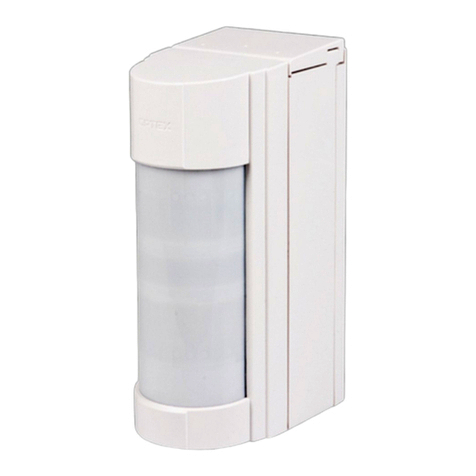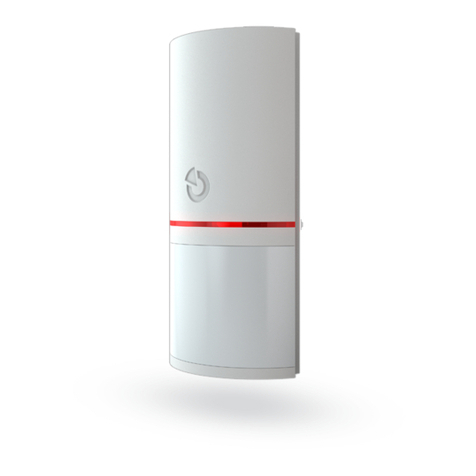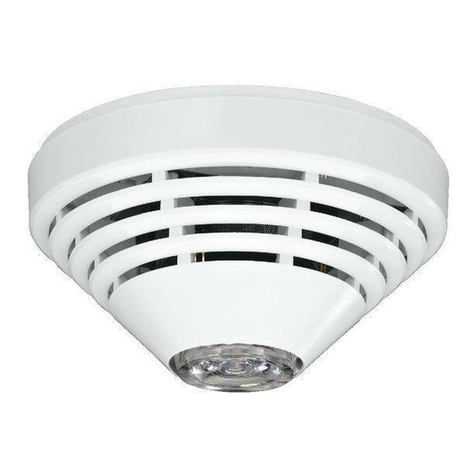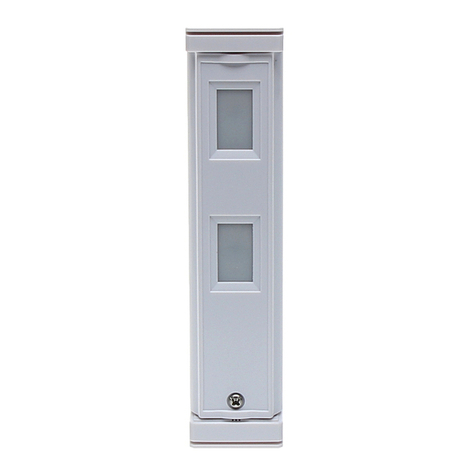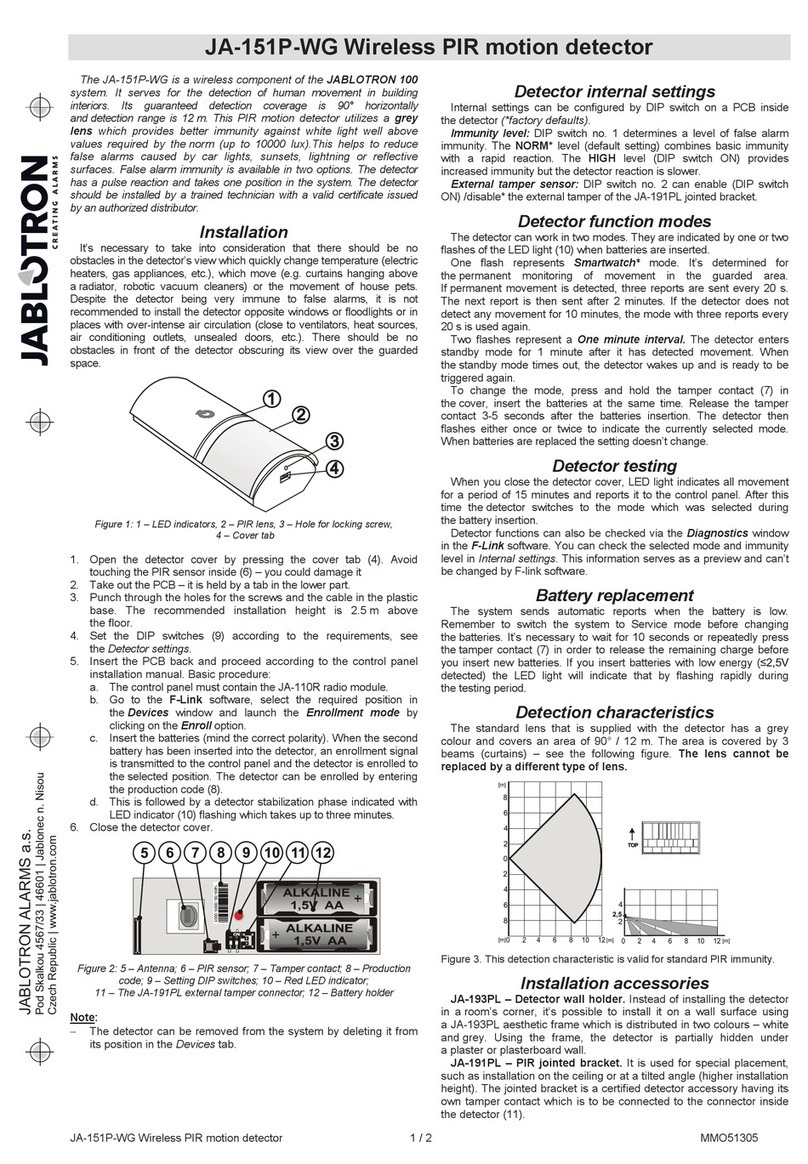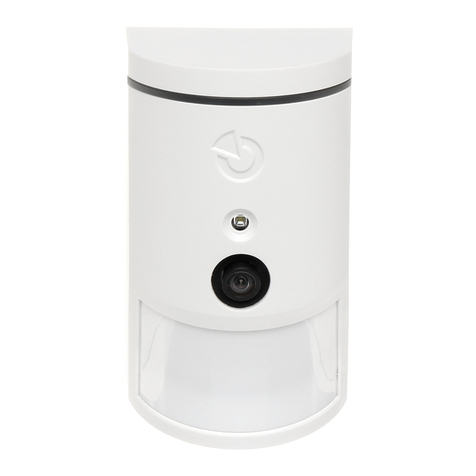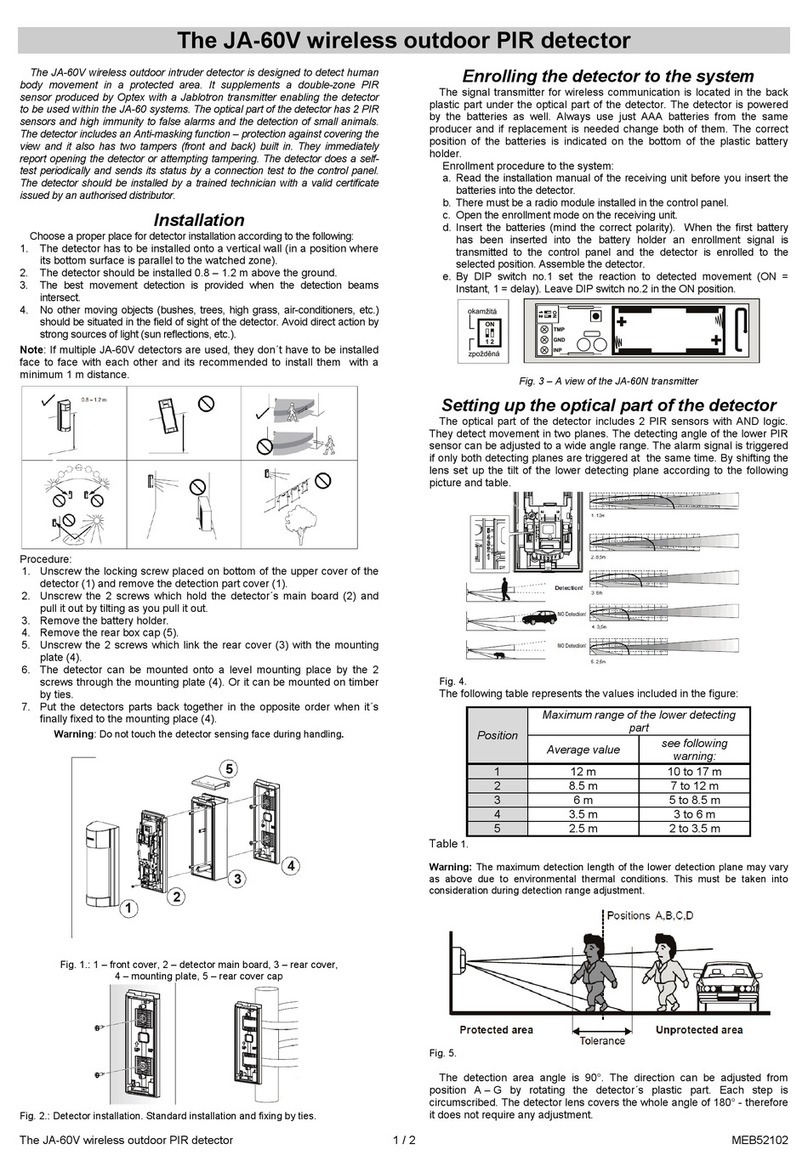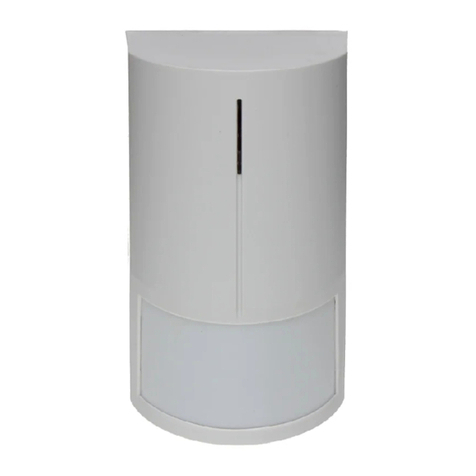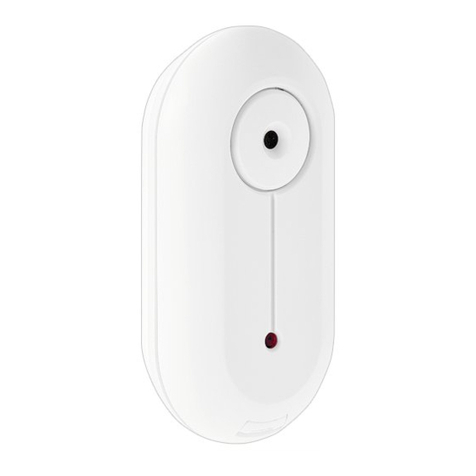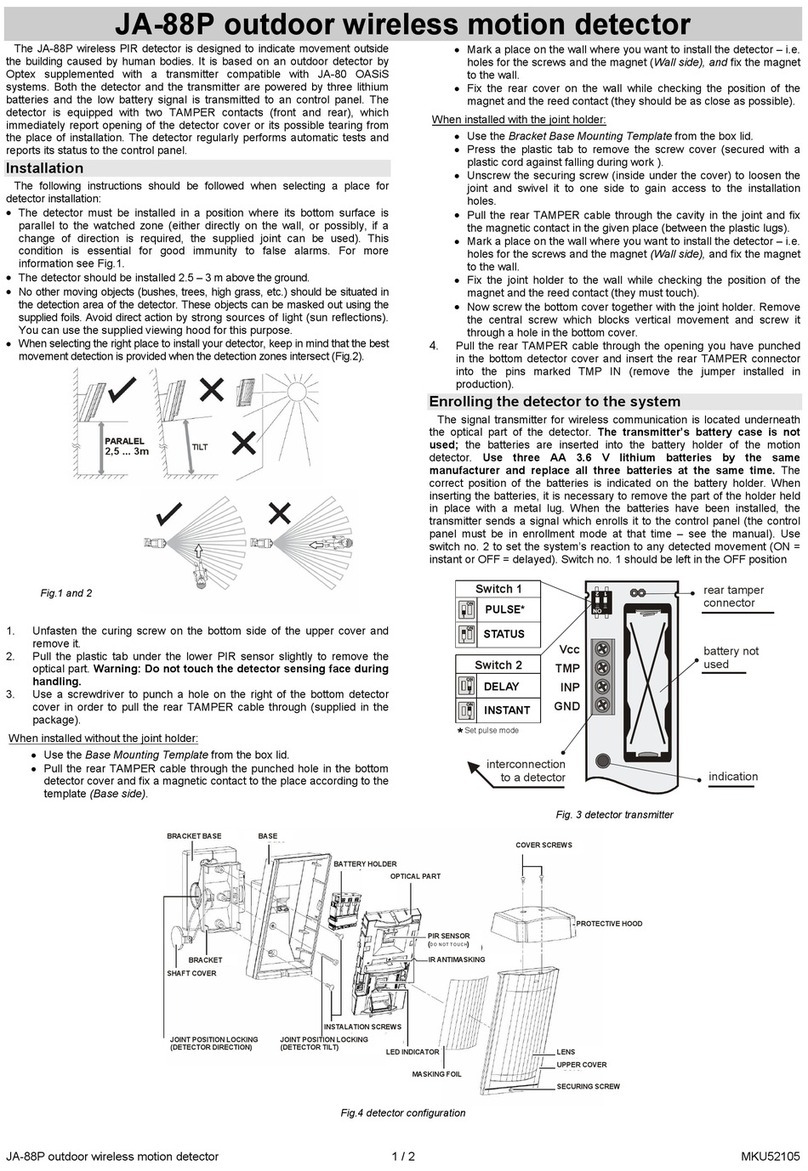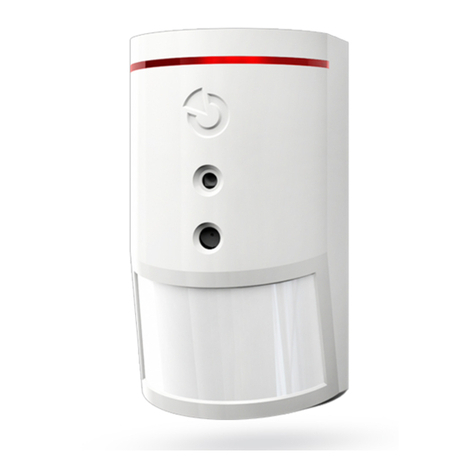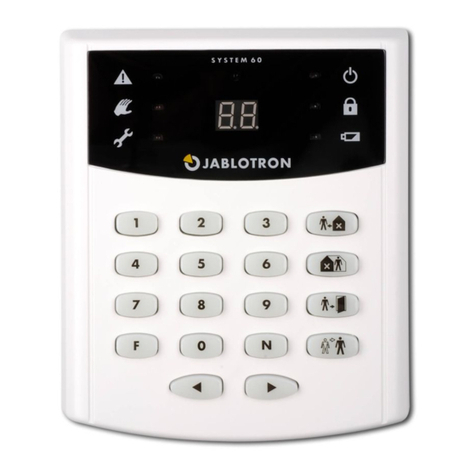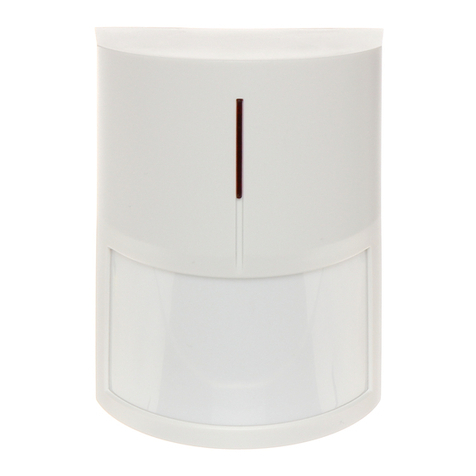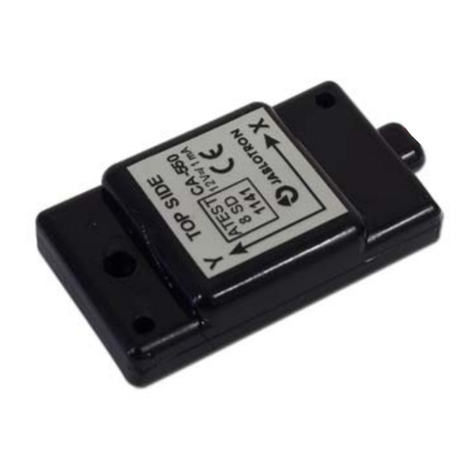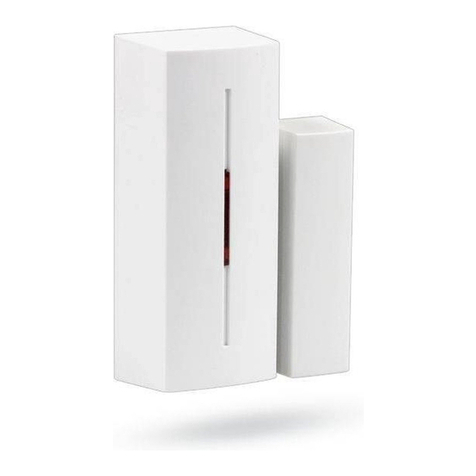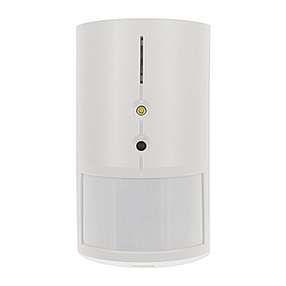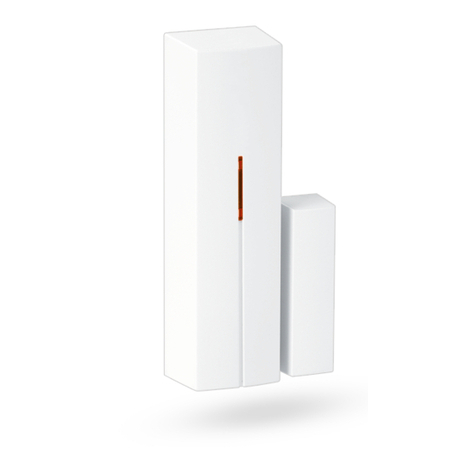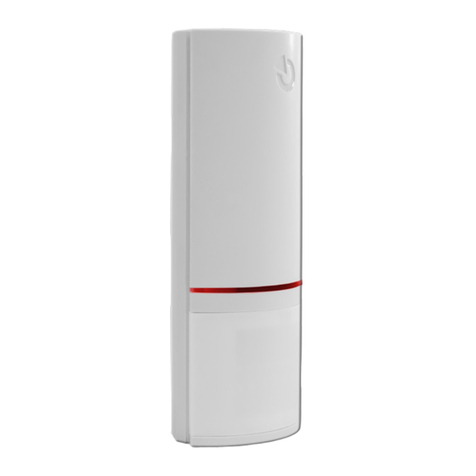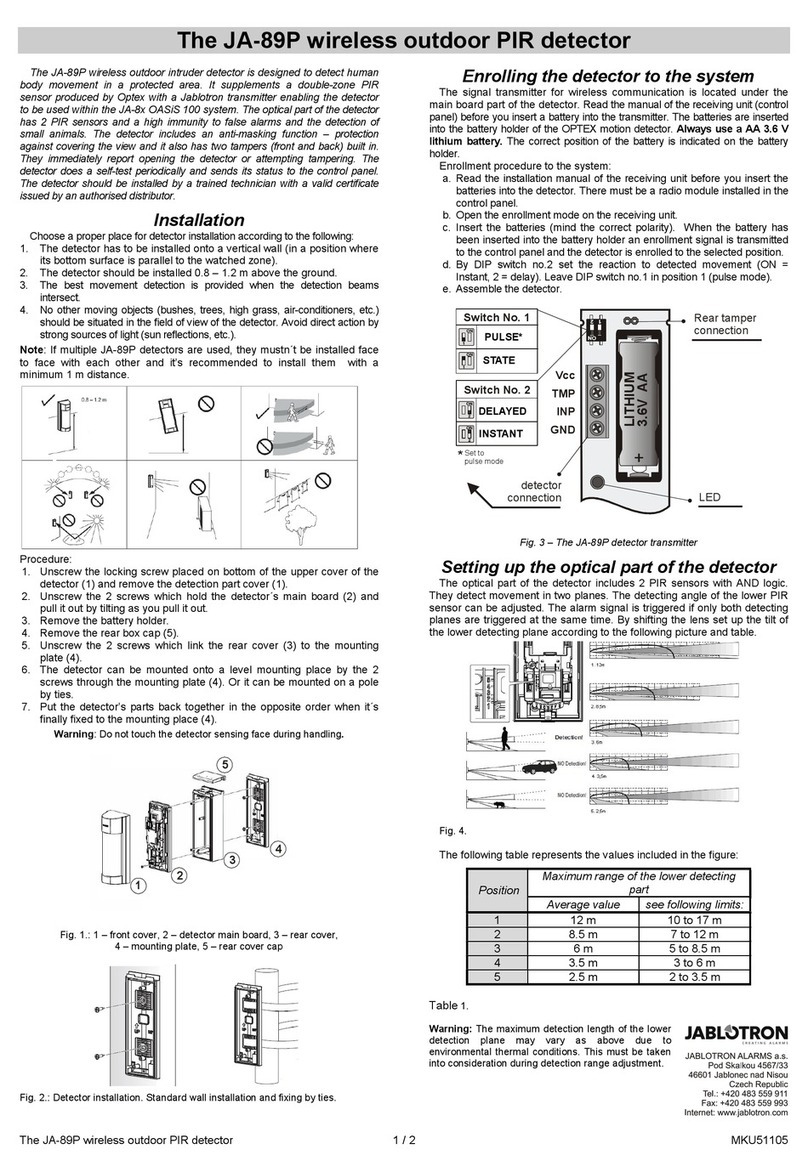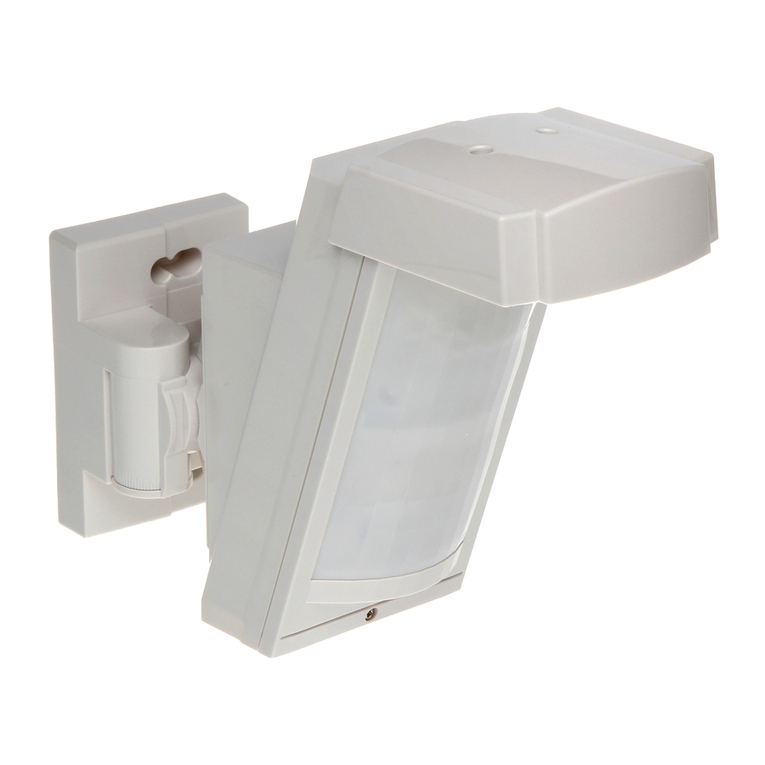The JA-80PB wireless motion/glass-break detector MHP52504
1
The JA-80PB wireless PIR motion/glass-break detector
The JA-80PB is a component of Jablotron’s Oasis 80 alarm system. It consists
of two independent detectors which occupy two separate enrollment
addresses in the control panel. The motion detector uses a PIR sensor. The
glass-break detector uses the analysis of air pressure variations combined with
the characteristic sound of glass breaking. The product is designed for internal
use in buildings. The battery-powered detector communicates via OASIS radio
protocol.
Lithium 3.6 V
PIR movement detector
Lithium
3.6V
Glass-break detector
Installation
Installation shall only be undertaken by technicians holding a certificate issued
by an authorized distributor. The detector can be installed on a flat wall or in
the corner of a room. Within the detection range of the PIR sensor avoid the
presence of objects rapidly changing in temperature, such as electrical
heaters, gas appliances etc. Moving objects with a temperature close to that of
humans such as curtains moving above a radiator, and pets should also be
avoided. Detectors should not face windows or spotlights or be near fast-
moving air e.g. near ventilation fans or open windows or doors. Because of its
sensitivity to air pressure changes and sounds it should not be located close to
air conditioning or ventilation outlets. There should be no sources of vibration
or audible sounds in the protected area. There should also be no obstacles
blocking the detector’s “view” of the protected area. Keep the detector away
from metal objects which could interfere with radio communication.
Warning: The most frequent cause of false alarms is bad detector-positioning
Do not arm this detector if there are any people or pets moving within the
protected area.
1. Open the detector cover by pressing the tab and disconnect the cable to
the module located in the front cover.
2. Remove the internal PIR module held by an internal tab.
3. Punch screw holes through the rear plastic cover. At least one screw
should penetrate the tamper-sensitive section.
4. Screw the rear cover to the wall, about 2 metres above the floor
(vertically, with the tab down).
5. Return the PIR module to its original place.
6. Leave the battery disconnected and the cover open and then follow
the control panel or receiver manual. The basics of enrollment are:
a. Enter enrollment mode on the control panel by keying in “1” in
Service mode.
b. Install a battery in the PIR detector to activate its enrollment.
c. Install a battery in the glass-break detector and then connect its
cable to the PIR module. This will activate its enrollment to the
next vacant address in the control panel. This means that the
glass-break detector enrolls after the PIR does.
d. Exit enrollment mode by pressing “#”
To observe EN 50131-2-2 the tab must be secured by the supplied screw.
To enroll a detector after having already connected batteries, first disconnect
the batteries, and press and release the tamper sensor to discharge any
remaining charge to ready the device for enrollment. After installing batteries
into the detector, allow two minutes for stabilisation. During this period the LED
is continuously lit.
PIR module DIP switches
NORM / HIGH: selection of immunity to false alarms. The NORM position
combines very good immunity with fast sensor reactions. The HIGH position
gives increased immunity with a slower reaction time and is only used for
problematic installations.
INS / DEL. DEL provides entrance & exit delays for detectors installed in a
building entrance. INS allows the detector to instantly trigger alarm activation
if the control panel is armed. This DIP switch (INS/DEL) only has an effect if
the detector has a natural reaction assigned to its address in the Oasis
control panel. It also has no effect when used with a UC-8x or AC-8x receiver.
Glass-break module DIP switches
DEL / INS selects the reaction of the control panel if glass-breaking is
detected. DEL provides entrance & exit delays and is recommended for
detectors installed near a building’s entrance door. INS allows the detector to
instantly trigger alarm activation if the control panel is armed. This DIP switch
(INS/DEL) only has an effect if the detector has a natural reaction assigned to
its address in the Oasis control panel. It also has no effect when used with a
UC-8x or AC-8x receiver.
PIR / GBS: This selects whether PIR or glass-break triggering is shown by the
LED. Changing this setting only has an effect during the first 15 minutes after
closing the cover (test mode).
Note: Although both detectors are located in one housing, they do act
independently. Each one has its own address. Each one also has its own
selectable reaction via DIP switches in the detector or in SERVICE mode on
the control panel.
Testing the detector
15 minutes after closing the detector cover, the LED shows PIR or glass-beak
detector triggering according to what was previously selected by the PIR/GBS DIP
switch during test mode. The strength and quality of detector signals can be
measured by the control panel in Service mode.
With the DIP switch in position PIR, short LED flashes indicate the processing of
movement triggering the detector. Long flashes show that movement detection is
being signalled to the control panel.
With the DIP switch in position GBS, the LED flashes very briefly when air
pressure changes occur, e.g. a soft knock on a window. A long flash indicates
triggering by breaking glass and the transmission of a signal to the control panel.
Testing and adjusting the glass-break sensor:
• Using a suitable tool or a hand protected by gloves, one by one, knock all
the windows that should be under the detector’s protection. A visible
deformation of the glass should occur but without any damage.
• The deformation of glass causes a change in the air pressure of the room
which makes the LED on the detector flash quickly. The DIP switch must
be in the GBS position.
• Sensitivity to air pressure changes can be adjusted by a potentiometer on
the glass-break sensor PCB located inside the front cover of the detector.
Turning clockwise increases sensitivity. Avoid selecting too high a
sensitivity as this can cause a short battery lifetime.
• The complete function of the glass-break detector can be tested with a
GBT-212 glass-break simulator. After knocking the glass, this simulator
will automatically generate the characteristic sound of breaking glass to
create the conditions for detector triggering.
• If there are any devices in the detector’s protected area generating sound
such as air conditioning, heating, fax machines, refrigerators, etc., check
that they are not triggering alarms by emitting sounds like breaking glass.
